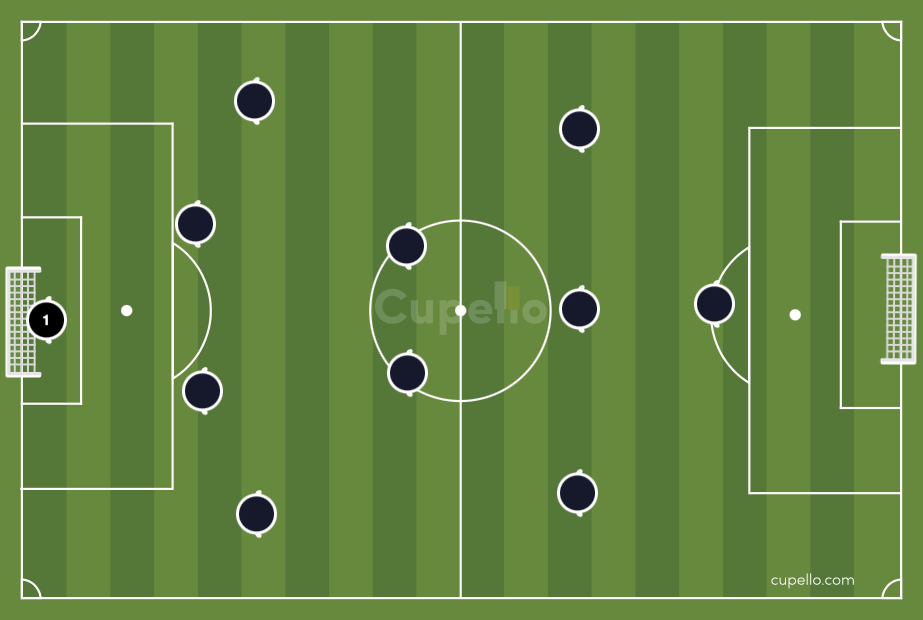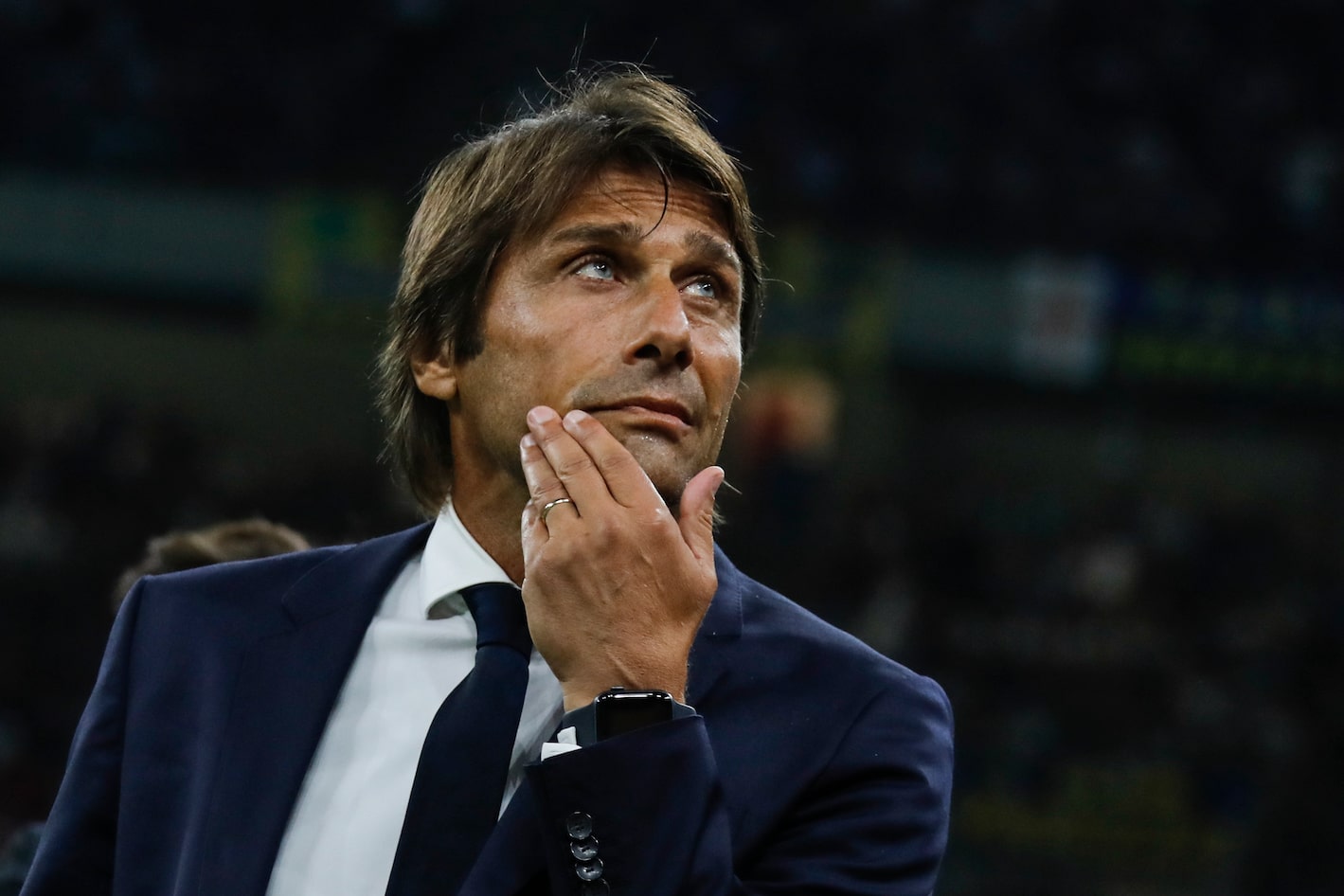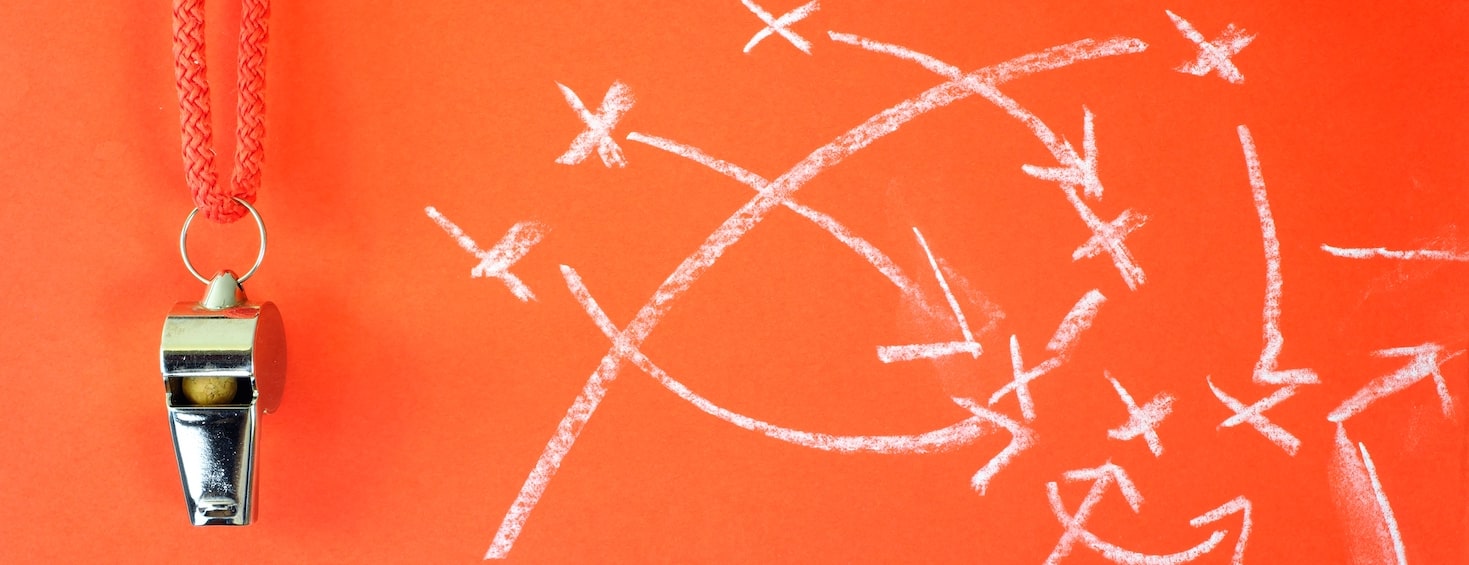Understanding the Importance of Formations in Soccer
A soccer formation is the positioning of players on the field during a game. It's crucial for coaches and players to understand how formations affect gameplay. A good formation can dictate attacking or defensive play, making it an essential aspect of team strategy.
When choosing a formation, there are several factors to consider such as player strengths and weaknesses, opponent tendencies, and match objectives. The back four defense is a common setup that provides solid coverage in the rear while allowing attackers freedom upfront. Coaches should choose their best soccer formation based on these factors to maximize their chances of success on the pitch.

What is a Formation in Soccer?
A formation in soccer is a tactical arrangement of players on the field that determines their positions and roles. It involves placing players in specific areas to execute attacking or defensive strategies effectively. There are many types of formations in soccer, each with its unique advantages and disadvantages, such as 4-3-3, 4-4-2, and 3-5-2.
Knowing the right formation in soccer can give your team a strategic advantage on the field.
Choosing the best formation depends on various factors like the team's style of play, player abilities, opposition strengths and weaknesses. For example, an attacking-minded team may opt for a forward-heavy formation like 4-3-3 to take advantage of quick passes upfront. On the other hand, a defensively solid back four may prefer playing narrow formations like 5–4–1 or 5–3–2 to avoid conceding goals easily while remaining compact at the back.
Why is a Formation Important in Soccer?
A well-designed formation is crucial to a soccer team's performance. The right formation can facilitate an attacking style of play, while also maximizing defensive coverage. A coach must identify the strengths and weaknesses of their own team as well as their opponents to select the best formation for each game.
The strategic placement of players in a formation can be utilized to exploit opponent weaknesses. For example, if the opposing team's defense struggles with fast-paced attacks down the wings, an attacking formation with wide midfielders could be used. By understanding and utilizing this tactic effectively, teams can enhance their chances of winning games.
Each position within a specific formation plays a vital role in ensuring its success on both offense and defense. For instance, in a back four system; having two center-backs who possess good ball-playing skills will contribute significantly during transitions from defense to attack while allowing fullbacks more freedom to push up on either flank during an offensive move or overlap when necessary.
Factors to Consider When Choosing a Formation
When choosing a soccer formation, it's important to consider several factors. First and foremost, coaches should evaluate their players' strengths and weaknesses to determine the best fit. Additionally, whether a game is played at 'Home' or 'Away' can affect strategy and require adjustments in formation. Finally, deciding on an offensive or defensive approach will dictate the appropriate formation to choose.
Here are some key considerations when selecting a formation:
- Player strengths and weaknesses: Identify which players are strong defenders versus attackers so you can position them accordingly.
- 'Home' vs 'Away' games - adjusting your formation accordingly: Consider how playing conditions may differ between home and away games; for example, if you're playing on a smaller field than usual (common in away games), you may need more attacking prowess.
- Offensive vs Defensive approach - choosing an appropriate formation: Deciding whether to go all-out attack or play defensively will impact your choice of back four positions. If you opt for an attacking style of play then utilising wing-backs could be ideal as they provide additional width going forward.
By considering these factors, coaches can select the best possible soccer formations that maximise their team's strengths while minimising any weak points.
Top 5 Best Soccer Formations
The 4-4-2 formation is a classic and widely used strategy in soccer. It features two lines of four players each, with two strikers up front. This formation provides a strong central defense while still allowing for effective attacks on the wings.
Another popular option is the 4-3-3 formation, which emphasizes an attacking style of play. With three forwards up top and a midfield trio to control possession and build plays, this setup can be highly effective when executed correctly. However, it may leave the backline vulnerable to counterattacks if not properly balanced.
Regardless of which formation you choose, remember that adaptability is key. Being able to adjust your tactics depending on the situation at hand can make all the difference between success and failure on the field.
4-4-2 Formation
The 4-4-2 formation is one of the most commonly used soccer formations in the world. It consists of four defenders, four midfielders, and two forwards. The basic overview of this formation is that it provides a solid defense while still allowing for an attacking presence on the field.
Each position in the 4-4-2 formation has specific roles and responsibilities. The defenders focus on keeping possession away from their opponents, while the midfielders work to control the pace of play by distributing passes and providing support to both attack and defense. Finally, the forwards are responsible for scoring goals by capitalizing on opportunities created by their teammates.
One advantage of using this formation is that it offers a balanced approach to both offense and defense with a midfield four. However, it can also lead to overcrowding in certain areas of the pitch if not executed properly. Coaches should keep this in mind when implementing this strategy during matches or training sessions.

4-3-3 Formation
The 4-3-3 formation can be incredibly effective for teams looking to dominate possession. With three midfielders, the team can control the center of the field and dictate play. Defensive strategies for these midfielders include pressuring opposing players on the ball, making timely interceptions, and quickly transitioning from defense to offense.
To make full use of this formation's attacking potential, coaches should focus on effectively utilizing their wingers. By pushing them high up the field and providing quick service from outside backs or central midfielders, teams with strong wingers in a 4-3-3 can create numerous scoring opportunities while maintaining defensive solidity through compactness in attack.

3-5-2 Formation
The 3-5-2 formation has gained popularity due to its effectiveness in the modern game. A key aspect of this setup is the back three, which provides a solid defensive foundation and allows for greater attacking options from the wingbacks. The fluidity between midfield and defense is also critical to success, as it enables quick transitions and support on both ends of the field.
Wingbacks serve as crucial attacking outlets in this formation, providing width and creating chances through overlapping runs. Their ability to track back defensively ensures balance in the team's shape when under pressure. However, coordination with central midfielders is essential for proper coverage of space and protection against counterattacks.
Overall, mastering the 3-5-2 requires dedication to training tactical awareness and seamless transitions between positions. Coaches who prioritize these elements will have a greater chance at success with this dynamic formation on match day.

4-2-3-1 Formation
In the 4-2-3-1 formation, holding midfielders play a crucial role in controlling the pace of play and maintaining possession. Their primary responsibility is to protect the backline while also helping to transition the ball from defense to attack. On the attacking end, having a creative number 10 playing behind the striker can maximize scoring potential by creating opportunities with through balls or shots on goal.
However, using a lone center forward in this formation requires key defensive considerations. This player must be able to hold up play and bring other teammates into attacking positions while also being aware of their positioning for counterattacks. Good communication between defenders is essential when leaving only one central defender back on defense as it can leave them vulnerable if they are not organized properly.

5-3-2 Formation
The 5-3-2 formation is a defensive strategy that can be effective against teams with strong attacking capabilities. With five defenders, three midfielders, and two forwards, this formation allows for a compact defensive structure while also providing options for counterattacks. The key to success with the 5-3-2 formation is proper communication between the defenders and midfielders, as well as quick transitions from defense to offense.
One of the benefits of using the 5-3-2 formation is its versatility in adjusting to different opponents. For example, if facing a team with weaker attackers, coaches may choose to move one defender up into midfield or add an extra forward for added attacking prowess. On the other hand, if facing a team with strong attackers, coaches may opt for an even more defensive approach by moving another defender back into play or adding an additional midfielder to strengthen their hold on possession.

Tips for Coaches Using These Formations in Training Sessions
When coaching with these formations, it's important to encourage communication and teamwork among your players. Emphasize the need for constant movement on the field and coordinating with teammates to maintain a strong defense. In training sessions, focus on drills that develop each player's specific position within the formation, such as practicing defensive slides for center backs or positioning for fullbacks.

Remember that every opponent is different, so be prepared to adapt your formation based on their playing style. Analyze their strengths and weaknesses before the game and adjust accordingly during play if necessary. By staying flexible in your approach to using these formations in games and practices, you'll give your team an edge against any opponent they face.
Drills to Practice Specific Positions
Individual drills for defenders can help improve their agility, speed and ability to tackle. Here are some important ones:
- Cone-drills that require quick changes of direction
- Implementing one-on-one tackling exercises with simulated game scenarios
- Back-pedaling drills to improve defensive positioning
Passing and positioning drills for midfielders is crucial as they need to be able to pass accurately while maintaining their position on the field. Here are some helpful exercises:
- Zigzag passing drill where players pass around cones in a zigzag formation
- Opposed possession games where a small team tries to keep possession against a large team
- Positional rondo exercise that trains players how to stay in position while passing under pressure
Shooting and attacking drills for forwards can help sharpen their striking skills, boost confidence and increase accuracy. Here are some proven routines:
- - Repetitive shooting practice from various angles at goal post
- - High-pressure finishing drill which requires scoring goals under time constraints
- - Small-sided games that focus on creating chances quickly
Encouraging Communication and Teamwork
Small-sided games that require constant communication and partner passing drills are effective ways to improve teamwork skills in soccer. By placing players in situations where they must communicate effectively with each other, they can learn how to work together more efficiently on the field. Additionally, fitness circuits with a team-building element will not only improve physical fitness but also promote bonding among teammates.
Here are some examples of drills that encourage communication and teamwork:
- "1v1+2" game: Two players support the attacker or defender depending on who has possession. This drill promotes quick decision-making skills and encourages communication between all three players.
- "Partner passing relay": Players pass the ball to their teammate while running through cones before handing it off at the end of the line. This drill focuses on improving accuracy and speed while teaching young athletes how to work together as a team.
- "The obstacle course": Set up an obstacle course for your team that requires them to rely on one another to complete tasks such as carrying heavy objects over short distances or navigating tight spaces without stepping out of bounds. Not only does this circuit help build strength and endurance, but it also teaches important teamwork skills like trust and cooperation.
By incorporating these types of drills into your training sessions, you'll be fostering an environment where good communication is valued, which will ultimately lead to better performance both individually and collectively as a team.
Adapting Formations for Different Opponents
Analyzing opponents' strengths and weaknesses before the game is crucial for soccer coaches looking to adapt formations. Coaches should pay attention to their opponent's formation or style of play, and make necessary changes to their own formation accordingly. For example, if an opponent has a strong attacking line-up, a coach may want to switch from a 4-4-2 formation to a 5-3-2 defense-focused formation.
Training sessions focused on adjusting quickly to different in-game scenarios can also help teams adapt formations more effectively. By running drills that simulate various scenarios such as changing formations mid-match or responding quickly to counter attacks, players can become more comfortable with adapting tactics on the fly. These training sessions will allow soccer professionals and coaches alike the opportunity develop strategies that are adaptable against any type of opposition they face during an actual match.
As a soccer coach or professional, understanding the importance of formations is vital to winning games. In this blog post, we'll explore the top 5 best soccer formations and provide real-world examples of teams using these strategies successfully. Plus, we'll share tips for coaches on how to incorporate these formations into training sessions effectively. By the end of this post, you'll have a solid foundation in choosing and implementing the best formation for your team's success.
Real-World Examples of Teams Using These Formations
Manchester United has a rich history of using the 4-4-2 formation with great success. This classic formation involves four defenders, four midfielders and two strikers, providing a solid balance between defensive stability and attacking prowess. With players like Roy Keane in midfield and Andy Cole up front, Manchester United won multiple Premier League titles throughout the 1990s using this formation.
FC Barcelona is known for their use of the attacking-minded 4-3-3 formation. This setup features four defenders, three midfielders and three forwards, allowing for quick counterattacks while maintaining possession of the ball. With superstars like Lionel Messi leading their front line, FC Barcelona has won numerous La Liga titles as well as Champions League trophies using this aggressive approach to soccer.
Chelsea FC has found success utilizing the 3-5-2 formation under coach Antonio Conte's guidance. This unique setup includes three central defenders supported by wingbacks on either side who can both defend and attack when needed. In addition to five midfielders controlling possession in the middle of the field, two strikers are able to press high up on opposing defenses creating scoring opportunities from multiple angles.

Real Madrid's recent dominance in modern soccer on both domestic and international fronts have been partially attributed to their use of the flexible 4-2-3-1 formation that allows for seamless transitions between defense and offense mid-match based on opposing teams' playing styles. Two holding midfielders provide defensive cover while a creative trio behind a lone striker are given license to roam forward looking for ways to break down opposition defenses through intricate passing moves.
The Italian National Team is notorious for its strong defensive performances on their way towards winning multiple major tournaments including World Cup competitions - often relying heavily upon its trademarked "catenaccio" style which employs an ultra-defensive minded variation offensively sound-minded formations such as variations within either; or more commonly five at-the-back formations such as those set out in the 5-3-2 or 5-4-1 formations. The key to success with these defensive formations is discipline, careful positioning and a willingness to absorb pressure while looking for counterattacking opportunities when they arise.
Manchester United - 4-4-2
The 4-4-2 formation has a rich history and evolution in soccer. It was first used widely in the 1970s and became popular among English teams due to its emphasis on physicality and directness. Each position in the formation plays a crucial role, with two central midfielders providing both defensive cover and attacking support for the strikers. However, its rigidity can also limit creativity on the wings.
Using a 4-4-2 formation can have several advantages, such as solidifying defense by having four defenders at all times while allowing for efficient counterattacks with quick passes to forwards. On the other hand, it may struggle against more possession-oriented opponents who overload the midfield or wingers who like to cut inside. As with any formation, careful consideration of team strengths and weaknesses is key when deciding whether to use this classic structure.
FC Barcelona - 4-3-3
FC Barcelona's famous 4-3-3 formation is built on a philosophy of possession-based play. By utilizing three midfielders in the center of the pitch, Barca is able to dominate possession and control the pace of the game. The two wingers provide width and allow for quick transitions, while also contributing to defensive duties when needed.
Tactically, this formation focuses on short passing and movement off the ball to create space. Players are encouraged to constantly interchange positions, making it difficult for opponents to mark them effectively. Success with this formation requires players who are comfortable on the ball and possess excellent technical ability, as well as an understanding of their roles within the team's overall strategy. With these attributes in place, FC Barcelona has used their 4-3-3 system to great effect over many years.
Chelsea FC - 3-5-2
Chelsea FC switched to a back three under Antonio Conte, primarily due to their defensive struggles in the previous season. This formation provides more cover for the defense and allows for greater attacking options through wingbacks. The importance of wingbacks is highlighted in this system as they play a critical role in both defense and attack, making overlapping runs on the flanks.
However, playing with a back three also poses its own set of challenges defensively. The central defenders need to be aware of their positioning at all times and must communicate effectively with each other. Additionally, it can be difficult to defend against teams that play with wingers who consistently look to exploit the space behind the wingbacks. These challenges require disciplined defending from all players on the pitch and an understanding of their respective roles within this setup.
Real Madrid - 4-2-3-1
During the 'Galacticos' era, Real Madrid utilized the 4-2-3-1 formation to dominate their opponents on the field. With talented players such as Zidane and Ronaldo leading the attack, this setup allowed for a strong defense while still creating scoring opportunities. The success of this formation during that period set a standard for future teams to follow.
When Zidane took over as head coach, he implemented the 'BBC' trio consisting of Bale, Benzema and Cristiano Ronaldo in front of an attacking midfield three. This lineup proved to be successful in winning trophies such as La Liga and their historic tenth Champions League title known as 'La Decima'. The 4-2-3-1 setup allowed for flexibility in both offense and defense while maximizing the strengths of each player on the pitch.
Italian National Team - 5-3-2
The Italian National Team has been known for its strong defensive strategies, and the 5-3-2 formation is a testament to that. This formation utilizes five defenders who are responsible for protecting the goal and stopping any offensive plays from the opposing team. The three midfielders work together to control the center of the pitch while also providing support to both defense and offense. With only two forwards, this formation requires technical skill and precision in order to create scoring opportunities.
One key benefit of using this formation is that it allows for a more compact defense, making it difficult for opponents to break through and score goals. However, since there are only two forwards, it may be challenging to create enough scoring chances if your team does not have strong attacking players or wingers who can provide support on both sides of the field. Overall, implementing this formation requires careful consideration based on your team's strengths and weaknesses as well as your opponent's playing style.


Improve Your GameJust 1.99 p/m
Exclusive drills and sessions, get involved today!
- 100’s of Drills
- Coach to Camera Videos
- Sessions from Pro’s
- Industry Leading Advice



Cupello
Rethinking soccer coaching via our industry leading tools. Built to offer effective coaching development solutions for players and coaches of all levels.